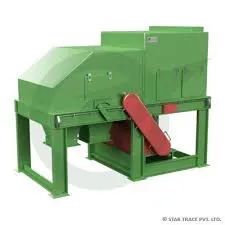

Lap . 07, 2024 18:10 Back to list
The Importance of Waste Copper Wire Recycling Machines
In recent years, there has been a growing awareness of environmental sustainability and the urgent need to recycle materials to conserve resources. Amongst the myriad of materials that can be recycled, copper stands out as one of the most valuable. Copper is widely used in electrical wiring, plumbing, and various electronic devices. As a result, the amount of waste copper wire generated is substantial, making waste copper wire recycling machines an essential investment for both businesses and the environment.
The Value of Copper Recycling
Copper is known for its excellent electrical conductivity, durability, and resistance to corrosion, which makes it a preferred material in various industries. However, the process of mining and extracting copper is not only energy-intensive but also causes significant environmental degradation. Recycling copper wire reduces the need for new copper production, thus conserving natural resources and minimizing environmental impact.
Recycling copper also offers substantial economic benefits. The global demand for copper continues to rise, driven by the growth of renewable energy technologies, electric vehicles, and infrastructure projects. This demand has increased the market value of recycled copper, making it a lucrative business opportunity for scrap yards and recycling facilities.
How Waste Copper Wire Recycling Machines Work
Waste copper wire recycling machines are specifically designed to efficiently process and reclaim copper from discarded wires, cables, and other electronic equipment. These machines typically consist of several components that work together to separate copper from insulation materials.
1. Shredding The first step in the recycling process is shredding the waste copper wire into smaller pieces. This is crucial because it allows for better separation of the copper and insulation during the subsequent stages.
2. Granulation After shredding, the materials are further reduced in size using granulators. This process helps to break down the insulation and expose the copper.

3. Separation The machine then uses various methods, such as air separation or water separation, to divide the copper from the non-metallic materials. Advanced machines may employ magnetic separators or eddy current separators to enhance the efficiency of this process.
4. Bagging Once the copper has been separated, it is collected and bagged for sale to recycling plants or metal refineries. The end product is high-purity copper granules or strips, ready to be reused in manufacturing new products.
Benefits of Investing in Recycling Machines
Investing in waste copper wire recycling machines brings a multitude of benefits. Firstly, it creates a closed-loop system where waste materials are transformed into valuable resources. This not only conserves copper but also reduces landfill waste, contributing to a cleaner planet.
Secondly, businesses that recycle copper can significantly lower their operational costs. By reclaiming copper from waste materials, they can reduce their need to purchase raw copper materials, leading to cost savings. Additionally, these businesses can sell the recycled copper at a competitive price, providing an additional revenue stream.
Lastly, utilizing recycling machines enhances corporate social responsibility. Companies that actively engage in recycling practices demonstrate their commitment to sustainable practices, which can improve their reputation and attract environmentally-conscious consumers.
Conclusion
As the world grapples with the challenges of waste management and resource depletion, waste copper wire recycling machines offer a practical and efficient solution. Not only do they enable the recycling of one of the most valuable metals, but they also promote environmental sustainability and economic savings. By investing in these machines, businesses can contribute to a circular economy while reaping financial benefits. In the fight against waste, recycling copper wire has emerged as a vital component, and waste copper wire recycling machines are at the forefront, paving the way for a more sustainable future.
Latest news
Troubleshooting Common Eddy Separator Problems
NewsJul.04,2025
The Role of Metal Recycling Plants in Circular Economy
NewsJul.04,2025
The Impact of Recycling Line Pickers on Waste Management Costs
NewsJul.04,2025
Safety Features Every Metal Shredder Should Have
NewsJul.04,2025
How Industrial Shredders Improve Waste Management Systems
NewsJul.04,2025
How Cable Granulators Contribute to Sustainable Recycling
NewsJul.04,2025